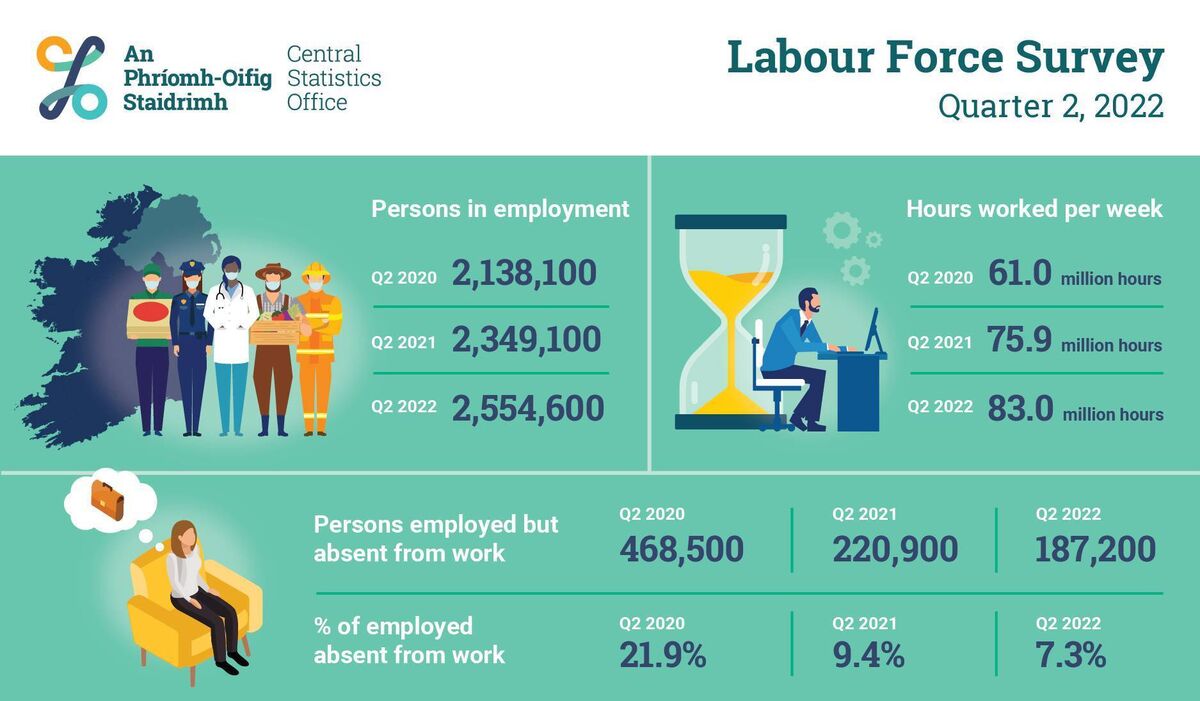Employment rate hits record high in Ireland

Employment rose across most sectors, though the largest year-on-year increase (39.2%) was in the accommodation and food service sector.
The number of people employed in Ireland has risen to a new high of 2.55 million, according to new figures from the Central Statistics Office (CSO).
The CSO’s latest Labour Force Survey, released today, showed that the employment rate for those aged 15 to 64 in the second quarter of this year was 73.5%, an 4.9% year-on-year increase.
In total, 2,554,600 people were employed in the State in the second quarter of this year, almost 200,000 more than in 2019. The figure is almost 700,000 higher than it was ten years ago.
Over the past year, the number of males in the labour force increased by 4.5% to 1.4 million, while the number of females increased by 6.9% to 1.25 million.
The overall participation rate was 65.2% in the second quarter, up from 63.1% in 2021.
Employment rose across most sectors, though the largest year-on-year increase (39.2%) was in the accommodation and food service sector, thanks to the ending of pandemic-related restrictions.
Employment in construction also increased significantly, by 31.4% in total.

“These surveys give us a picture of the economic and social situation of the citizens of Ireland in a way, and with a level of accuracy,” said CSO statistician Sam Scriven.
“Employment increased in the year to Q2 2022 across most economic sectors with the largest increase in accommodation and food service sector. However, employment in this sector at 168,200 remains below the Q2 2019 level of 180,800.”
There was a 9% year-on-year rise in the total number of hours worked per week, with employees working a record 83 million hours a week in total during the year’s second quarter.
“The impact on hours worked varied across the different economic sectors. The number of hours worked in Q2 2022 per week was higher than a year ago in almost all sectors,” Mr Scriven said.
The number of absences from work during the quarter was down to 187,200, compared to a peak of 468,500 absences recorded at the same time in 2020, when the labour market was most impacted by Covid-19 related restrictions.
One in four people were still working from home full time, with 36% of those employed still working from home on some level.
Only 119,900 people of working age (4.5% of the population) were classified as unemployed this year.










